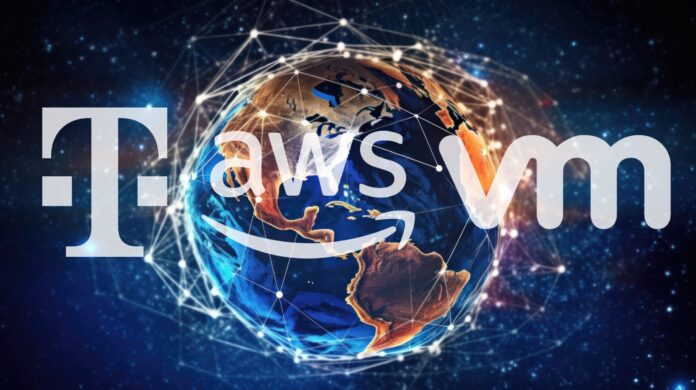In a major show of industry collaboration, Deutsche Telekom has combined with AWS and VMware, plus Mavenir and Dell, to develop a global private 5G network and edge compute platform for enterprises. The new proof of concept is dubbed a “globally distributed enterprise network”, which bundles both global and private cellular connectivity from Deutsche Telekom, plus from roaming partners, with compute and storage resources at “campus locations” in Prague, in the Czech Republic, and Seattle, in the US. The cloud service is augmented by an Open Grid Alliance (OGA) node in Bonn, in Germany.
The setup goes like this: private standalone 5G (SA) networks in Prague and Seattle have been connected to a Mavenir core on a regional AWS (‘Region’) data centre in Frankfurt, in Germany; these private network and edge compute services, provisionally billed by Deutsche Telekom and managed by AWS (according to its telco-channel Integrated Private Wireless model in Europe), are being presented in combination with regional roaming in Europe and North America. The private/public 5G “convergence” is carried on AWS infrastructure in both regions.
There is more detail: the private 5G radio access network (RAN) and user plane function (UPF) in Seattle have been hooked up to VMware’s ‘telco cloud’ platform (to “enable low latency services”); the same firm’s management and orchestration (SMO) service (for automating services in distributed cloud arrays) is deployed there also, but serves as the global orchestrator. The OGA grid node, using OGA design principles for distributed edge AI networking, was established on Dell infrastructure in Bonn – to enable “seamless connectivity across the European locations”.
The point of the exercise is to show how to “federate, abstract, and orchestrate” geographically distributed connectivity and compute resources. The trio are targeting multinational enterprises, looking for “global reach [and] local autonomy”. Deutsche Telekom is positioned as the sales channel; enterprises “will be able” to book connectivity services directly from it, the idea goes – with a “unified interface for service and management of the network across its locations”.
In the proof, the trio deployed distributed AI and centralised analytics, in the form of a localised machine-vision camera application in Prague and Seattle, connected over the “global private enterprise network” to centralised analytics engines. A statement said: “Operators were able to run AI components concurrently for immediate analysis and inferencing. This helps demonstrate the ability for customers to seamlessly connect devices across locations using the global enterprise network.” They also pointed to autonomous vehicles and robotics as likely applications.
Kaniz Mahdi, group chief architect at Deutsche Telekom, said: “As AI gets engrained deeper in the ecosystem of our lives, it necessitates equitable access to compute and connectivity for everyone, everywhere across the globe. Multinational enterprises are seeking trusted and sovereign compute and connectivity constructs that underpin an equitable and seamless access. Deutsche Telekom is excited to partner with the OGA ecosystem for co-creation on these essential constructs and the enablement of distributed edge AI networking applications of the future.”
Stephen Spellicy, vice president in VMware’s service provided division, said: “[This] modern and scalable platform aims to offer the agility required in distributed environments. VMware’s [telco cloud platform] is suited to deliver the compute resources on-demand wherever critical customer workloads are needed. As a founding member of the OGA, VMware embraces both the principles of this initiative and the opportunity to collaborate more deeply with fellow alliance members AWS and Deutsche Telekom to help meet the evolving needs of global enterprises.”
As a footnote, the OGA mission statement goes like this: “The OGA aims to create a comprehensive communications grid, called the Open Grid, which will act as a utility for hyper-composed applications, providing the right type of resources in the right place and at the right time. The Open Grid will be a system of systems that is naturally decentralised, localised, and federated. The OGA’s approach involves assessing, monetizing, and evolving various technologies, partnering with cities and municipalities to create ‘innovation zones’, and guiding the development of reference architectures.”

